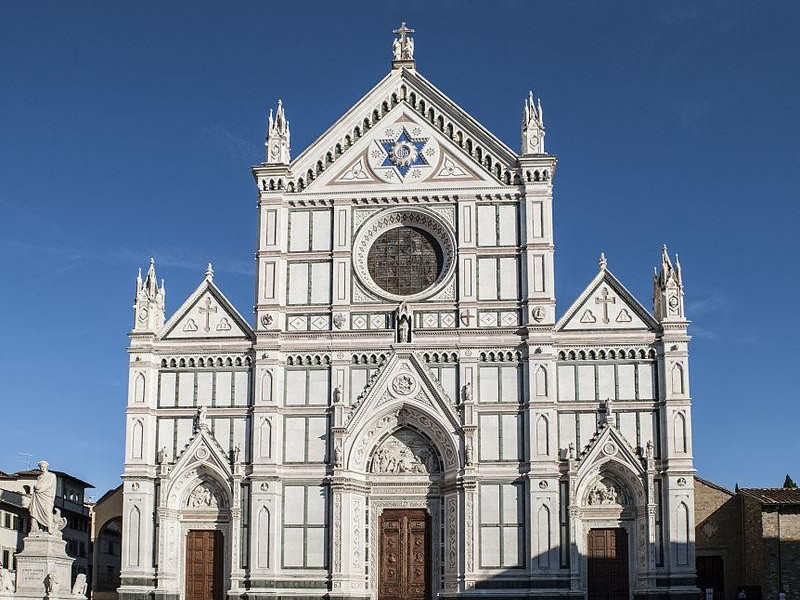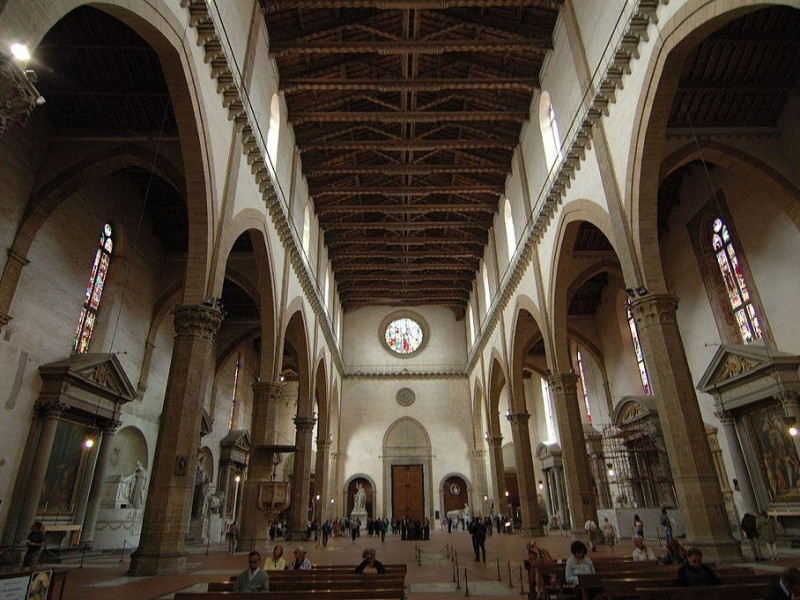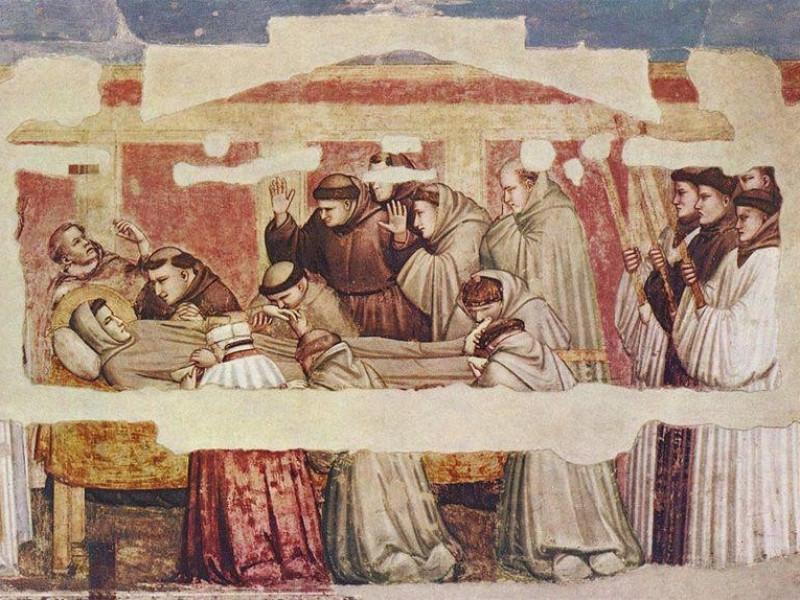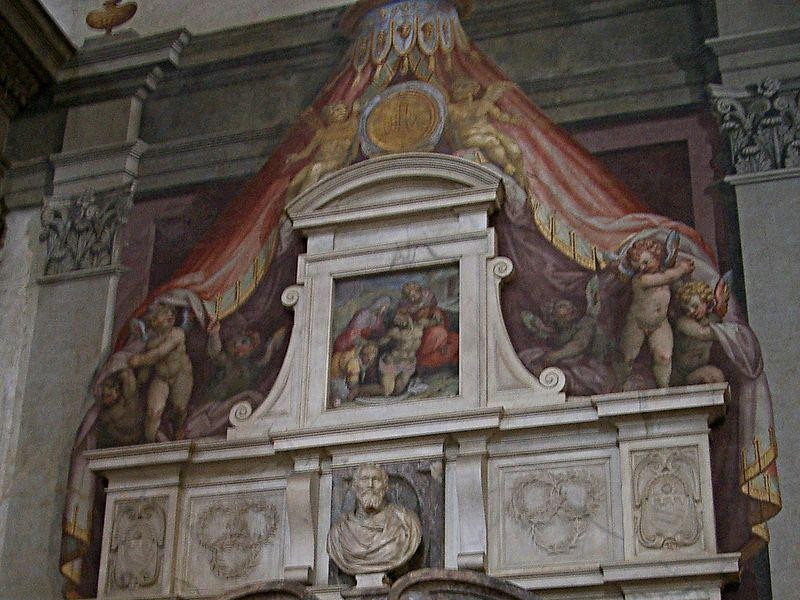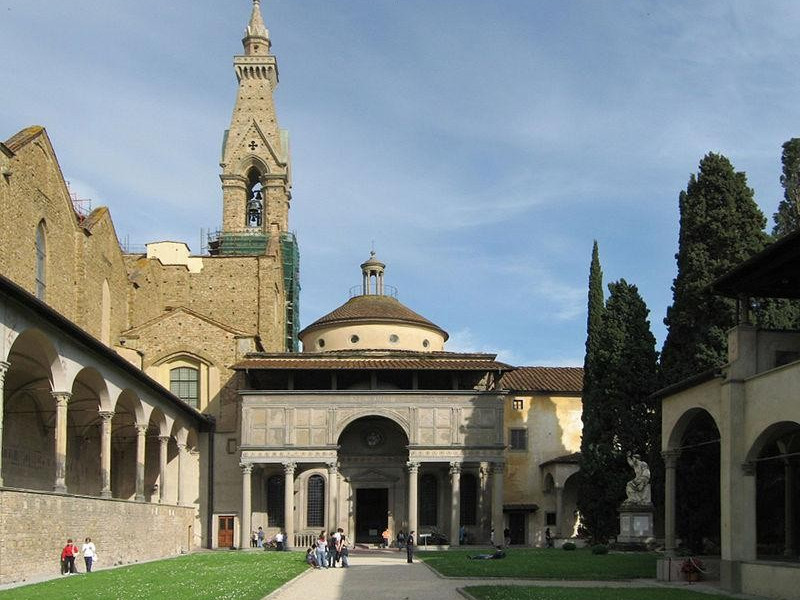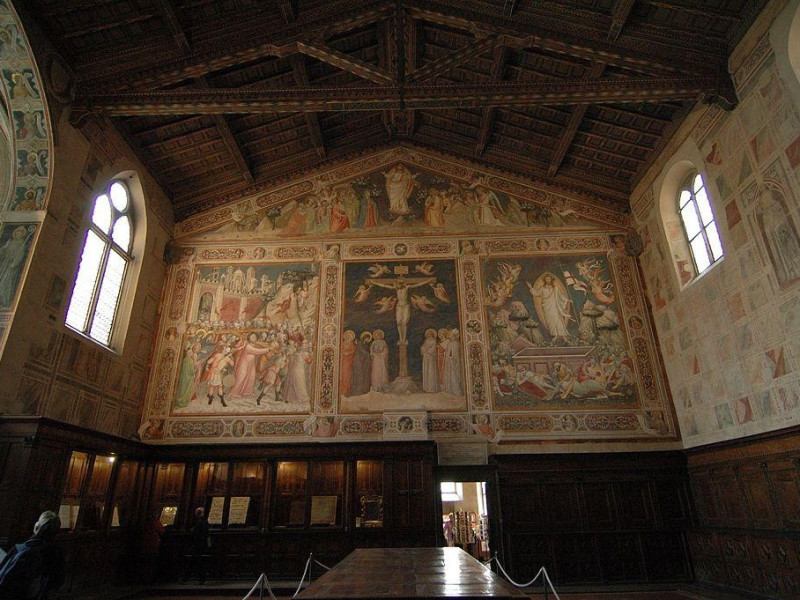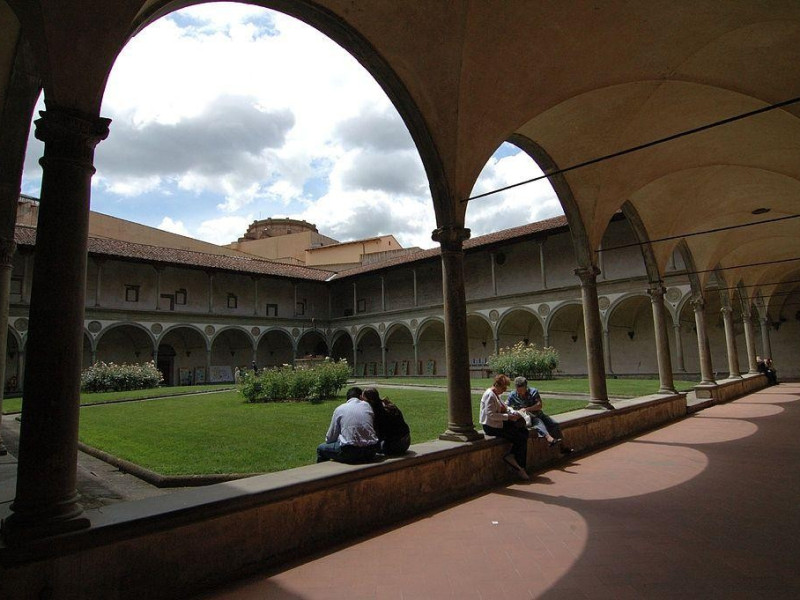Basilica di Santa Croce
It is one of the largest churches of Florence, also known as "Italian glories Temple" for the numerous tombs of great artists, writers and scientists. The project of the Santa Croce complex is traditionally attributed to Arnolfo di Cambio, although there are no written documents that confirm this, at the expense of the population of the Florentine Republic. The Monastery was born simultaneously with the Basilica, and the initial group were added early in the sacristy, the dormitory, the infirmary, the guest quarters, the refectory and the library. The Basilica has continued to be enriched and modified in the seven centuries since its foundation, acquiring new symbolic connotations: from the Franciscan church in "town hall", from religious vanue for families and corporations to laboratory and artistic workshop and theological center, to "pantheon" for Italian glories and place of reference of the political history of pre-and post-unification. In 1966, the Florence flood inflicted serious damage to the complex, which became a symbol of artistic losses suffered by the city. The current facade was built between 1853 and 1863, by the architect Niccolò Matas, in neo-Gothic style. Among the works of arts are the three lunettes of the portals, which are reminiscent of the Legend of the True Cross, which the Church is dedicated. Unmistakable is its side profile, punctuated by bare false triangular gables and bays, with tall light windows and hanging in pietraforte. On the left side, it bores a fourteenth-century portico, called "delle Pinzochere". The slender bell tower dates back only to 1847-1865, by Gaetano Baccani. The interior, wide and solemn, has a Egyptian cross-shaped, "T", typical of other large churches convent. The great nave is supported by arches on octagonal pillars, with a beamed ceiling. The Main Chapel is inspired by Gothic architecture, with a strong upward thrust out from the umbrella ribs in the time and the narrow windows. The frescoes that decorate it are work by Agnolo Gaddi (1380), as the designs of the windows. Even more important are the frescoes in the next two chapels: the Peruzzi and Bardi Chapels, both decorated by Giotto between 1320 and 1325. In the first are the St. John the Baptist and St. John the Evangelist's Stories, while in the Bardi, the St. Francis's Stories. The aisles housing countless tombs are scattered on the floor only 276 marble slabs with reliefs and coats of arms and carved many tombs are located on the walls between the Vasari altars. In 1871 he was buried here Ugo Foscolo for his own desire to be next to Michelangelo and Galileo. After this episode, they began arriving other bodies of celebrities from all over Italy (Gioachino Rossini, Leon Battista Alberti, etc.). The Sacristy is a large room covered with trusses and rich in frescoes. The fourteenth-century Cloister, on the right side of the facade, introduces the Pazzi Chapel, a masterpiece by Filippo Brunelleschi and the whole Renaissance architecture: presents a barrel vault decorated with round and rosettes by Luca della Robbia. Inside, twelve large medallions of the Apostles, one of the best creations by della Robbia. Next to the Pazzi Chapel, according to the Second Cloister, there is a score square with a central well, very elegant work of 1453, attributed by some to the Brunelleschi design. The exhibition continues with a visit to the premises of the fourteenth century Refectory, where places are important examples of religious art, among which the Crucifix by Cimabue, one of the most important works of art of all times, and the great series of frescoes by Taddeo Gaddi (1333).
